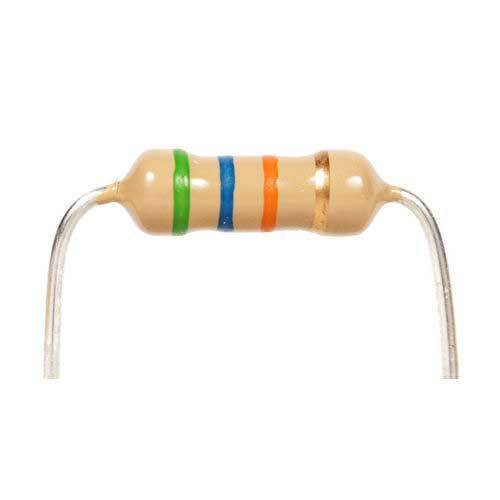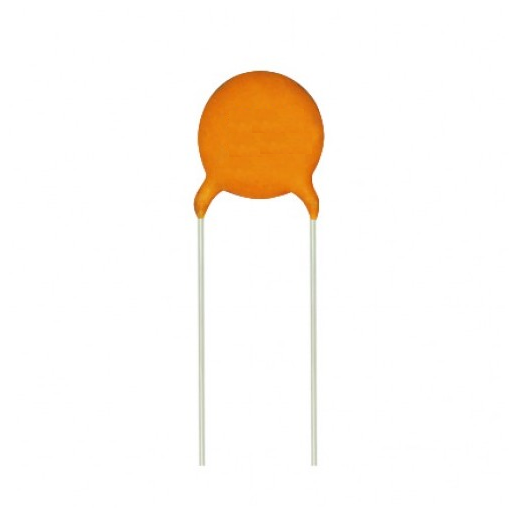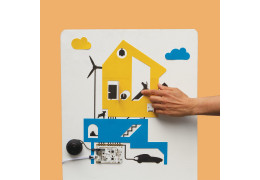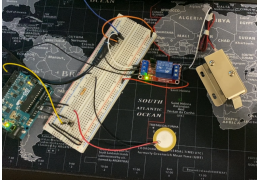How we will approach our orders going forward with the CUPW strike.
Store address and hours
location_on 4131 Fraser St. Vancouver BC Get Directions
phone 604-875-1993 Call us
access_time Hours
| Monday - Friday | 9AM - 5:30PM |
| Saturday - Sunday & Holidays | Closed | See Holiday Hours |

-
 close
close -
CATEGORIES
-
-
-
-
-
-
-
-
-
-
-
-
-
Featured Items
-
-
-
-
-
-
-
More mirco-controllers
-
More Developement Tools
-
-
More Prototyping
-
More Modules
-
-
Featured Items
-
More prototyping Tools
-
-
-
-
-
-
-
-
Featured Item
-
-
-
-
-
-
-
Featured Items
-
-
-
-
-
-
-
-
-
-
Featured Items
-
-
-
-
-
-
-
-
-
-
-
Featured Items
-
-
-
-
-
-
-
-
-
Featured Items
-
-
-
-
-
-
Popular Cleaners
-
-
-
Featured Items
-
-
-
-
-
-
-
Featured Items
-
-
-
-
-
Featured Items
-
-
-
-
Featured Products
-
-
-
-
-
more motor
-
-
more power supplies
-
-
Featured Items
-
-
-
more electrical devices
-
-
-
-
-
-
-
Featured Items
-
-
-
-
-
-
BRANDS
-
- PROJECTS
-
COMMUNITY
-
-
-
FEATURED POSTS
-
-
-
- SALE
- GST/HST Break
Magnetic Railgun

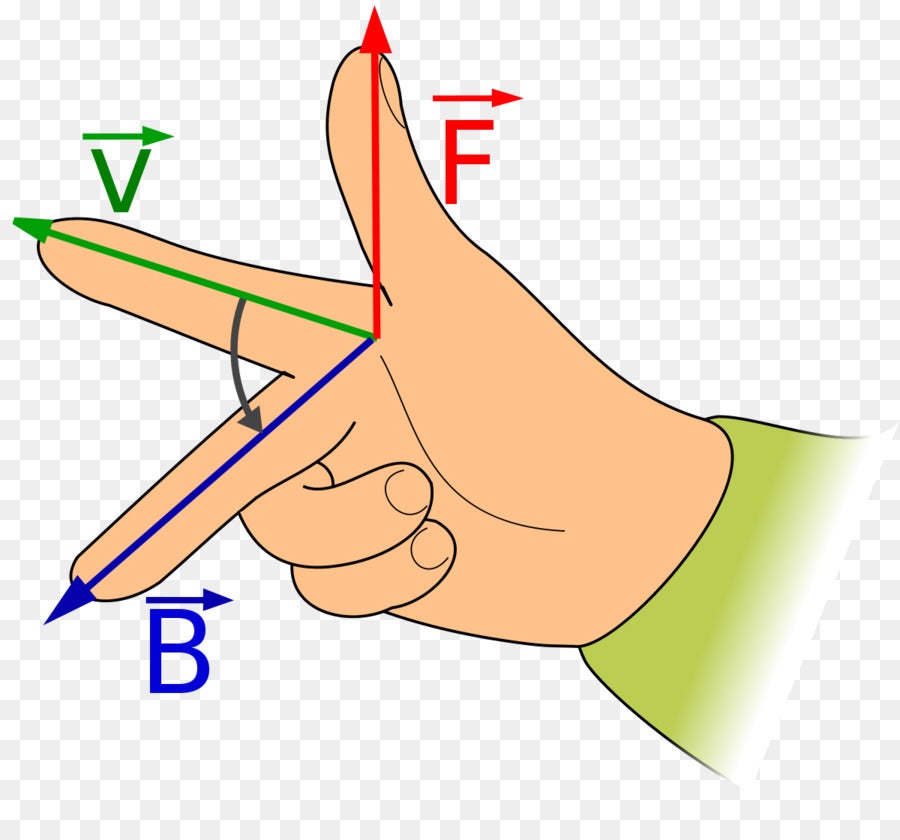
WARNING: Read "IMPORTANT" steps so that you won't hurt yourself or get electrocuted if you decide to make the improved version of the railgun
Created by: Duncan Yee
Overview
The concept of a railgun consists of propelling a conducting object along 2 conducting rails due to a magnetic force and an electric force. The direction of the propelling force is due to electromagnetic fields called the Lorentz force.
A charged particle moving with a velocity [V], through an electric field perpendicular to a magnetic field [B], will experience a force [F], as depicted in the diagram to the right. This diagram illustrates the direction of the Lorentz force with the use of the right-hand rule.
In the case of this experiment, the movement of charged particles through an electric field is the flow of electric charge moving across a copper wire. The magnetic field is induced with very strong neodymium magnets.
The equation is thus the cross product: [F] = Il X [B]
I – current
l – length of the wire
Parts
Large Rectangular Neodymium Magnets (Lee’s PID: 60012)
12AWD copper wire (Lee’s PID: 22498)
12V Battery (Lee’s PID: 81036)
Alligator Clips (Lee’s PID: 690)
Exacto Knife (Lee’s PID: 5457)
Diagonal Cutter (Lee’s PID: 10383)
Cardboard (Lee’s recycling bin)
Optional: Digital Compass (Lee’s PID: 98411)
Parts Improving the Design
450V 470uF Capacitors (Lee’s PID: 8604)
600V 35A Bridge Rectifier (Lee’s PID: 71096)
60VA Step Down/Up Isolated Transformers (Lee’s PID: 10501)
26 AWG Hook Up Wire (Lee’s PID: 224007) or more Alligator Clips
Electrical Tape (Lee’s PID: 10564)
Ferrite Bead (Lee’s PID: 10812)
Step 1: Stripping the 12AWD Copper Wires and Placing the Rails
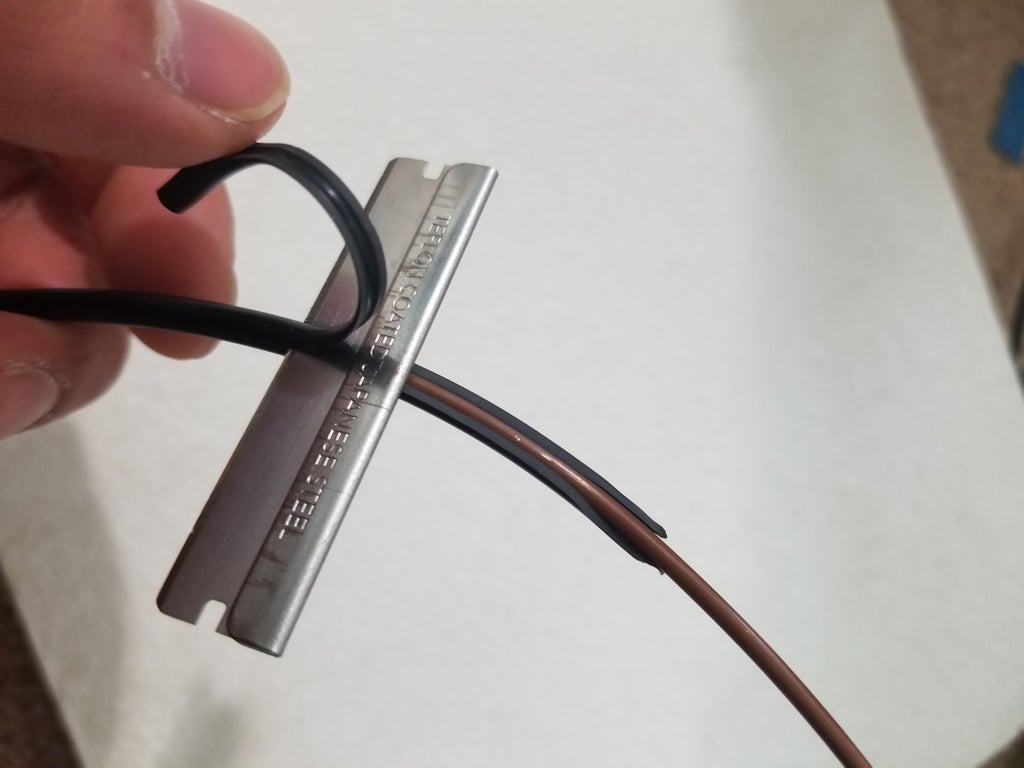
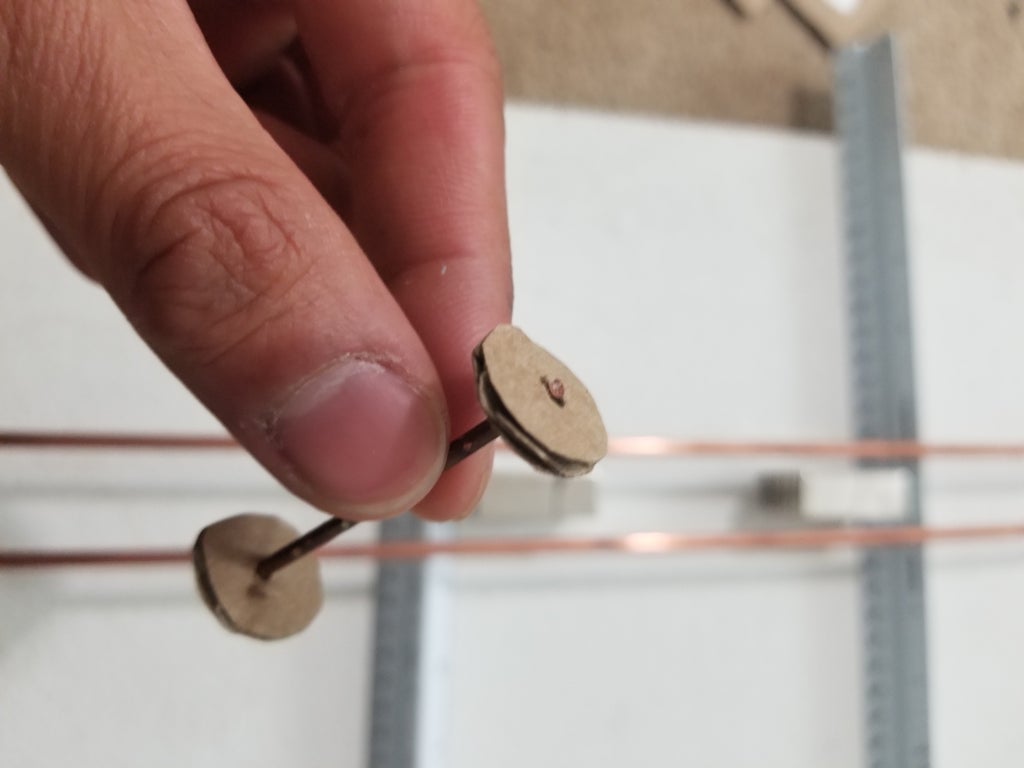
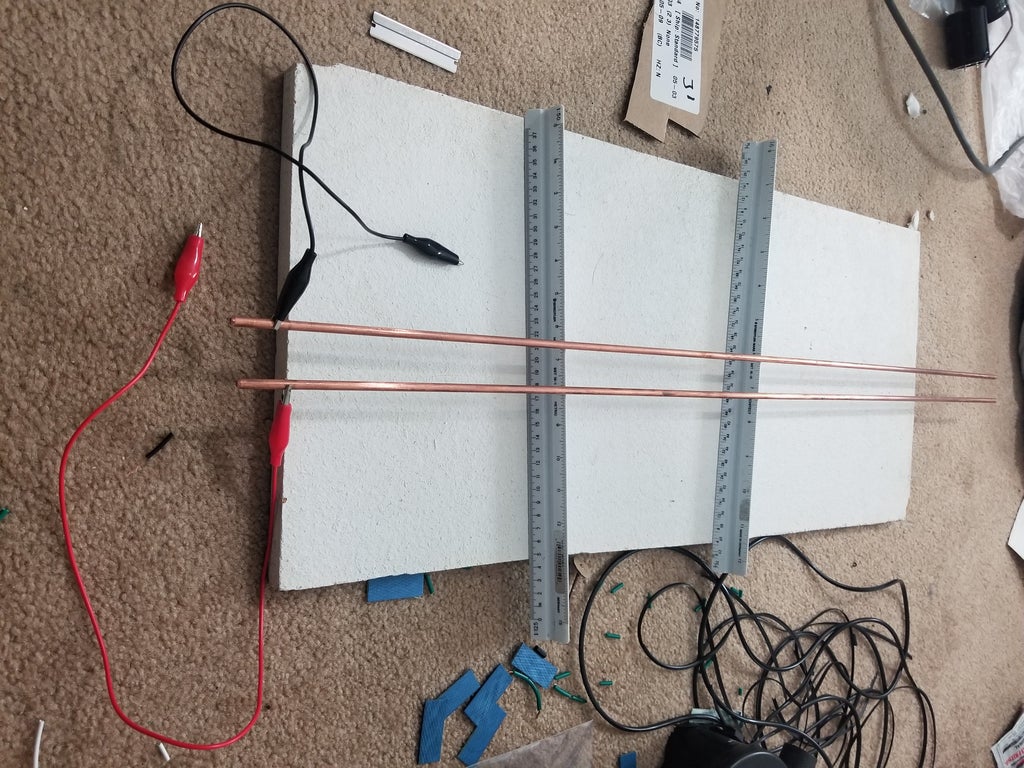
Using the exacto knife, cut away the plastic cover of the copper wire. Cut two strips of wires at 2 feet long with the diagonal cutter. Cut one more strip of wire at 2 inches long which will be used as the propelling object. Copper is chosen as it is a good conductor of electricity.
Cut out 2 small circles from the cardboard and poke a hole into the center of the circle. Attach this onto the ends of the 2 inch wire to keep it on the path of the rods while it is being fired.
Try not to bend the wires when you bring them home so that you can straighten them out as the ‘rails’. Prop them up with something that doesn’t conduct electricity so that they won’t short. I used 2 rulers, but you can use the cardboard found in Lee’s recycling bin. Clip an alligator clip leaving the other end free on each ends of the rails.
Step 2: Inducing the Magnetic Field (1)


With the height of the rulers I’ve used, I can fit 5 of the rectangular neodymium magnets under the rails. The more magnets you have stacked, the stronger the magnetic force. Make sure that the magnets do not touch the copper wires since this will again, short the rails.
Since the neodymium magnets consist of a north pole on one side and a south pole on the other side, stack the faces up.
Keep the magnets facing the same direction throughout this experiment. Remove a stack of magnets to the desired height and place them under and between the two rails. Place another stack as close as possible along the rails. The magnetic force between these stacks of magnets will oppose each other. I held them in place with the two rulers.
Step 3: Inducing the Magnetic Field (2)
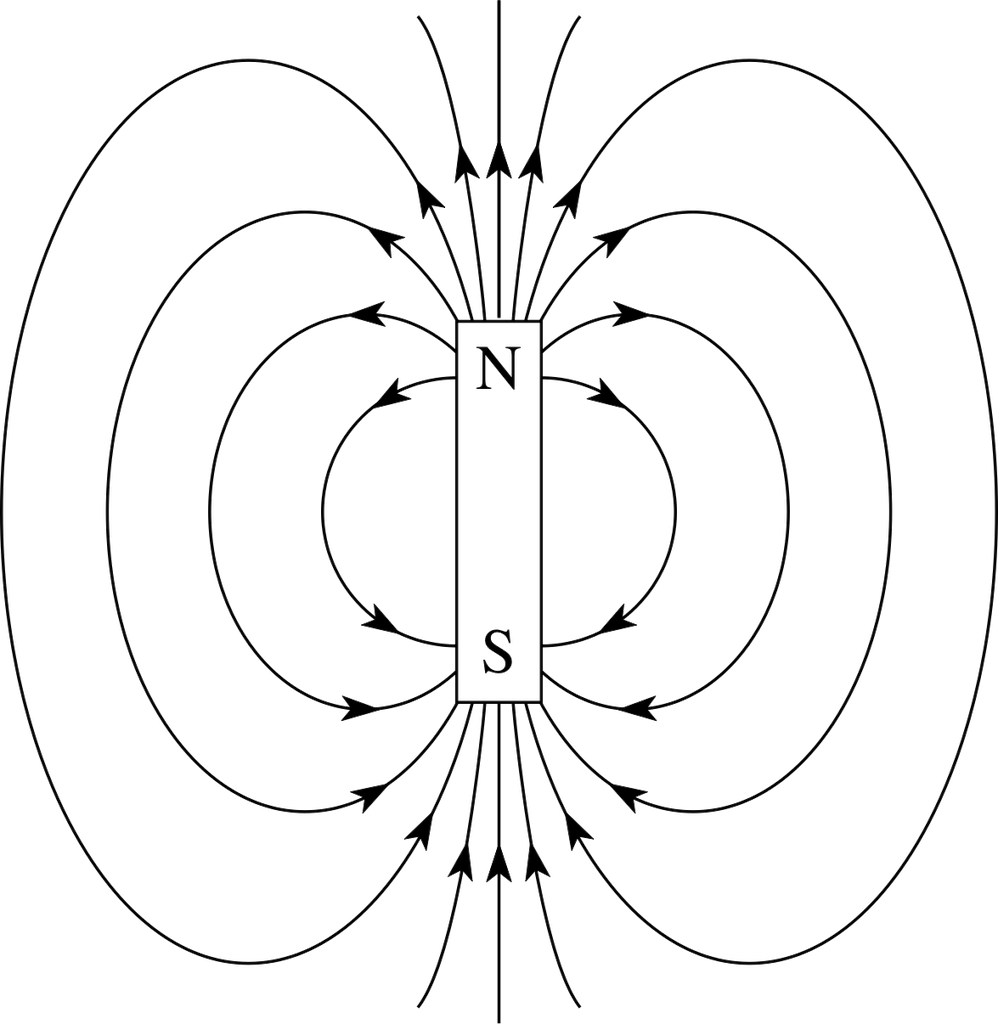

At this point, we don’t know whether the magnetic force is directed upwards or downwards. It also doesn’t matter. However, you can determine the direction with the compass. The north pole of the compass will be directed at the south pole of the magnet. This will also tell you the direction of the magnetic force.
IMPORTANT: it is really hard to handle these magnets and if they smash into each other, they will easily shatter and break.
Step 4: Inducing the Flow of Electric Charge

Place the straightened 2 inch copper wire along the rails above one of the stack of magnets. This will create a short on the rails, but this is where we want the electric charges to flow.
Connect the free ends of the alligator clips, one to the negative end of the 12V battery terminal and one to the positive end. The 2 inch rod will now move. The direction of the movement can be determined by the forces described above using the right-hand rule. If you did not use a compass to determine the direction of the magnetic force, you can easily change the direction of the propelling rod by swapping the connections to the battery terminal. Again, this can be confirmed with the illustration of the right-hand rule.
Remove one of the connections of the alligator clip from the 12V battery terminal.
Step 5: Firing the Railgun
Place the wire to be propelled on one end of the rail about 1 quarter above the first stack of magnets. Reconnect the alligator clip to the 12V battery terminal and the wire will shoot.
… This will not fire impressively as you can see that the wire will only be propelled to the next magnet and it will have no force propelling it in between the magnets. But..
- - - - - - - - - - - - - - - - - Improving the Railgun - - - - - - - - - - - - - - - - - -
Step 6: Inducing the Magnetic Field
Using a sturdy meter stick made from non-conducting material (wood, plastic), glue the stack of magnets onto one of its sides with super glue and wrap it in place with electrical tape. Wait for it to dry. With the magnets facing the same direction as the original design, repeat with another stack of magnets right next to the first stack. This may be a little difficult since the magnets will oppose each other. Get someone strong to do this.
Again, wait for it to dry and repeat until the row of magnets reach the length of the rails. Place the meter stick under and between the 2 rails with the magnets on the opposite side. This will induce a magnetic field throughout the entire length of the rails allowing the wire to continue being propelled forward.
Step 7: Setting Up the Projectile
Place the ferrite bead on a flat surface and fill half of the bead with silicone sealant and wait for it to dry. Stick the ends of the wire being propelled to the center of the silicone and glue it in place with super glue. Make sure that the wire is long enough to keep its contact with the rails. This will keep the projectile on the path of the rails with less friction compared to the carboard originally used.
NOTE: You may need to use a bigger ferrite bead to increase the weight of the projectile if it ends up flying off when it is fired.
Step 8: Setting Up the Capacitors
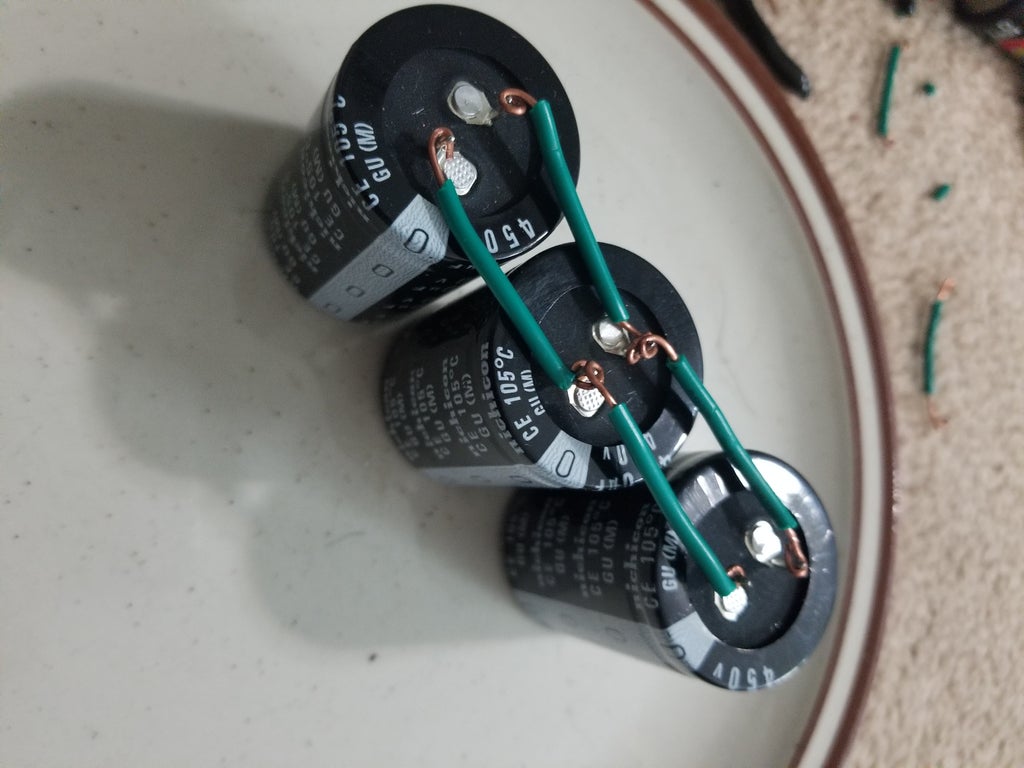
The chosen capacitors can be thought of as a bigger battery. The battery like capacitor holds a charge which is dropped very fast compared to normal batteries that are commonly used (AA, AAA, etc.). This discharge rate depends on the time constant; the bigger the time constant, the longer the capacitor will hold its charge.
The formula for the time constant is: [T] = R * C
[T] = time constant
R = resistance
C = capacitance (of the capacitor)
Since the resistance of copper cannot drastically change, to increase the time constant allowing the charge to be held longer, we can increase the capacitance of the capacitors by connecting them in parallel with the 26 AWG wire. The strip along the chosen capacitor shows a negative sign (-) which means the post closest to it is the negative post. Connect them in parallel by connecting the negative post of one capacitor to the negative post of the next. Repeat with the positive post. This will be equivalent to using 1 ‘battery’ as a source of power with the capacitance being the sum of the number of capacitors you choose to be connected.
NOTE: 3 capacitors may not be enough to hold the charge, you can add more to your liking.
Step 9: Charging the Capacitors (1)
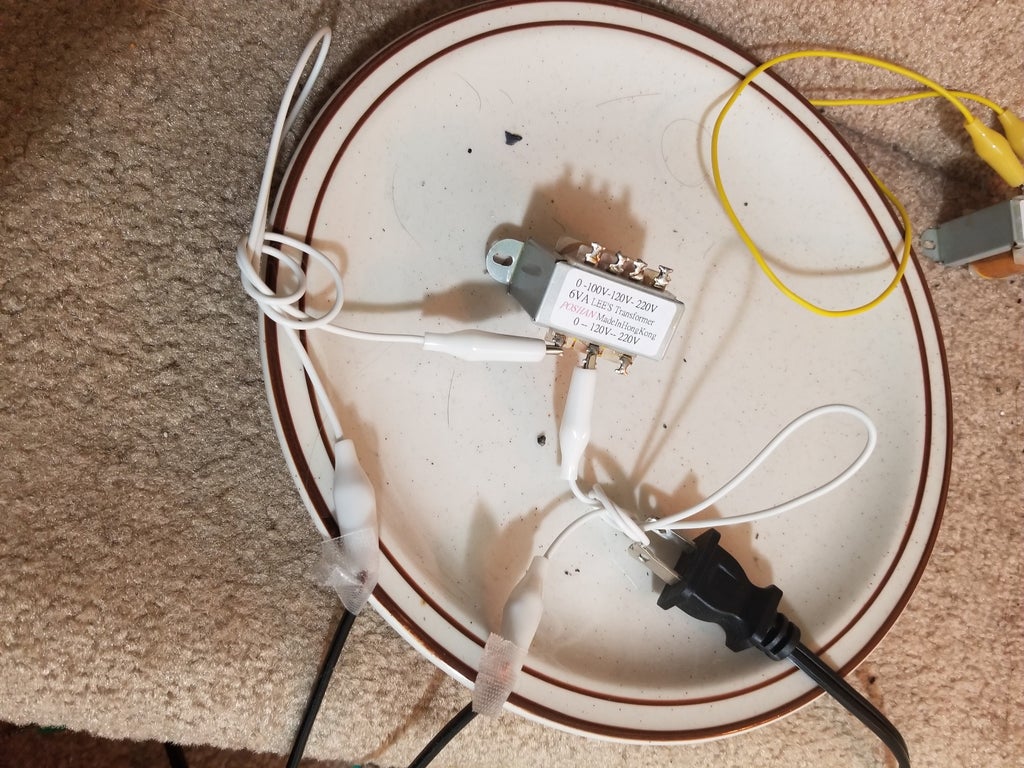
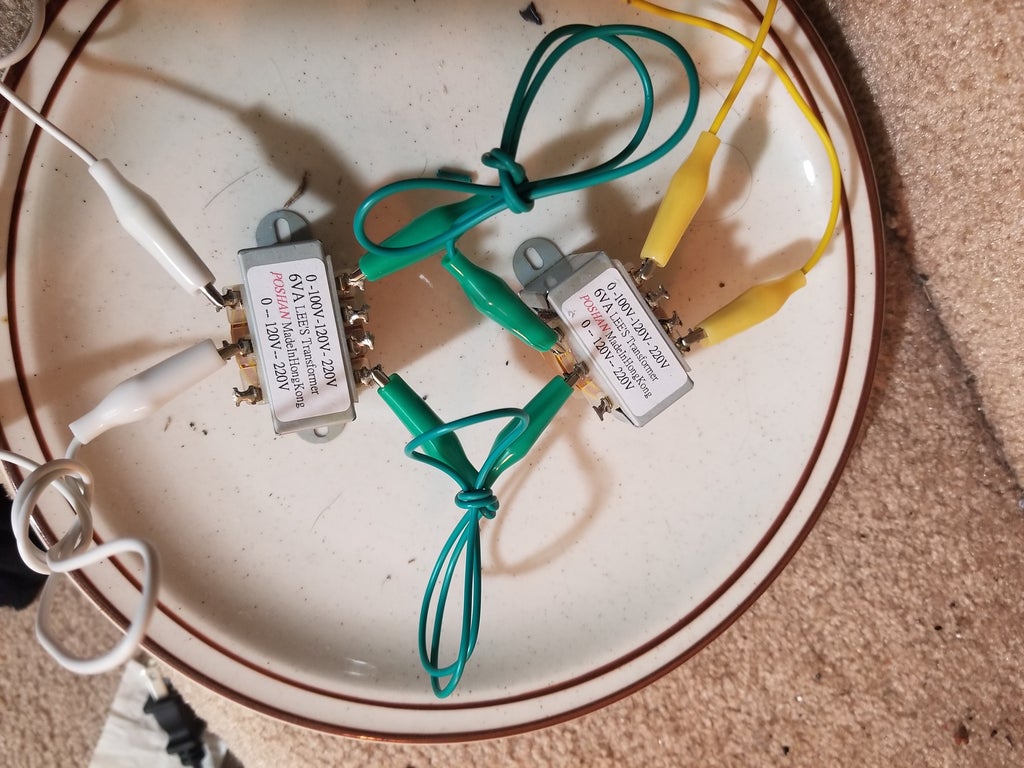
The capacitors I’ve chosen can hold a maximum of 450 volts. To charge these capacitors, we apply 450 volts to them using the power supplied from the wall socket.
IMPORTANT: check the voltage supplied by your country. It will either be 120 or 220 volts AC. In Canada it is 120 volts which means we must multiply this roughly by 4 to reach 450 volts.
Using 2 alligator clips, connect the ends of the power cord to one transformer at 0 and 120. Using 2 more alligator clips, connect the ends of the clips to the other end of the transformer at 0 and 220. This ratio will multiply the voltage from the wall by 1.8.
Connect the ends of the alligator clips coming from the first transformer to the second transformer at 0 and 120. Using 2 more alligator clips, connect the ends of the clips to the other end of the transformer at 0 and 220. This will again multiply the voltage by 1.8 giving a total of 3.6.
Step 10: Charging the Capacitors (2)
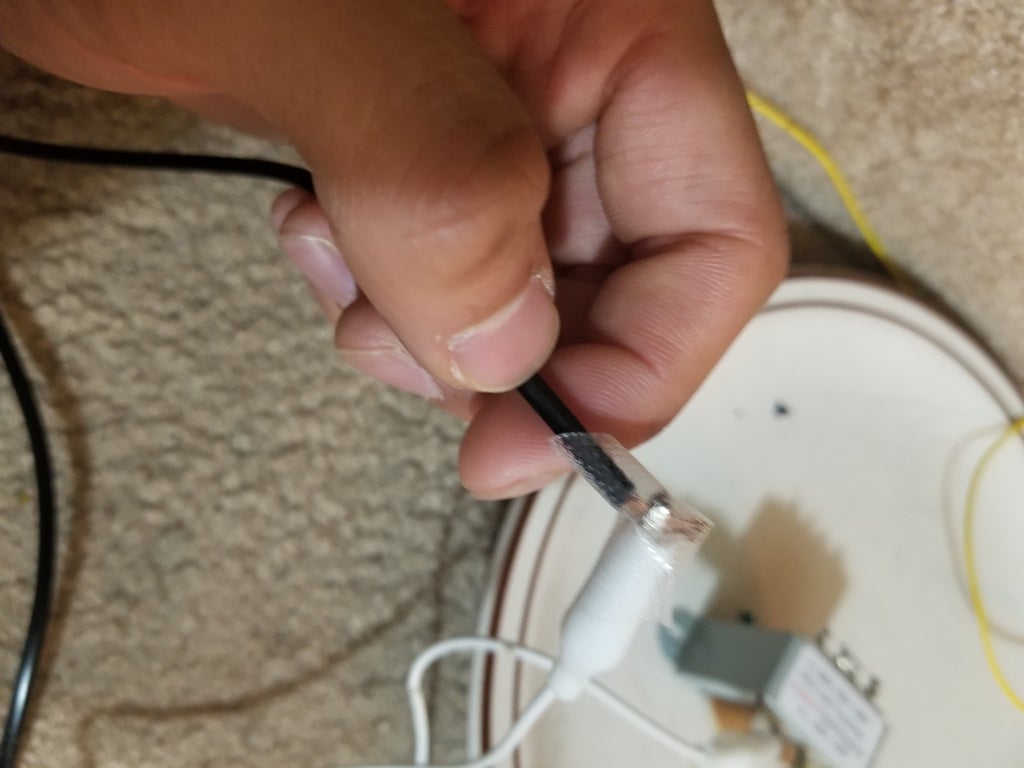
IMPORTANT: do not touch the ends of the power cord or you will get electrocuted. Wrap the exposed wires using electrical tape so you will not be able to touch them. Do not touch the ends of the alligator clips connected to the transformer either.
Step 11: Charging the Capacitors (3)
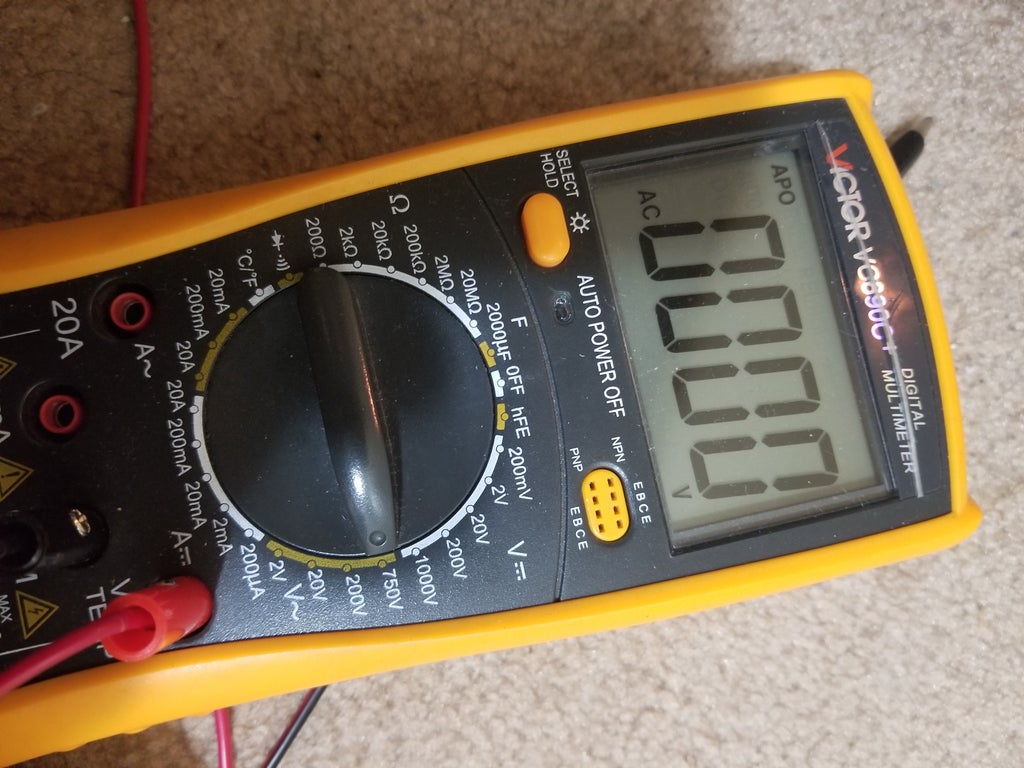
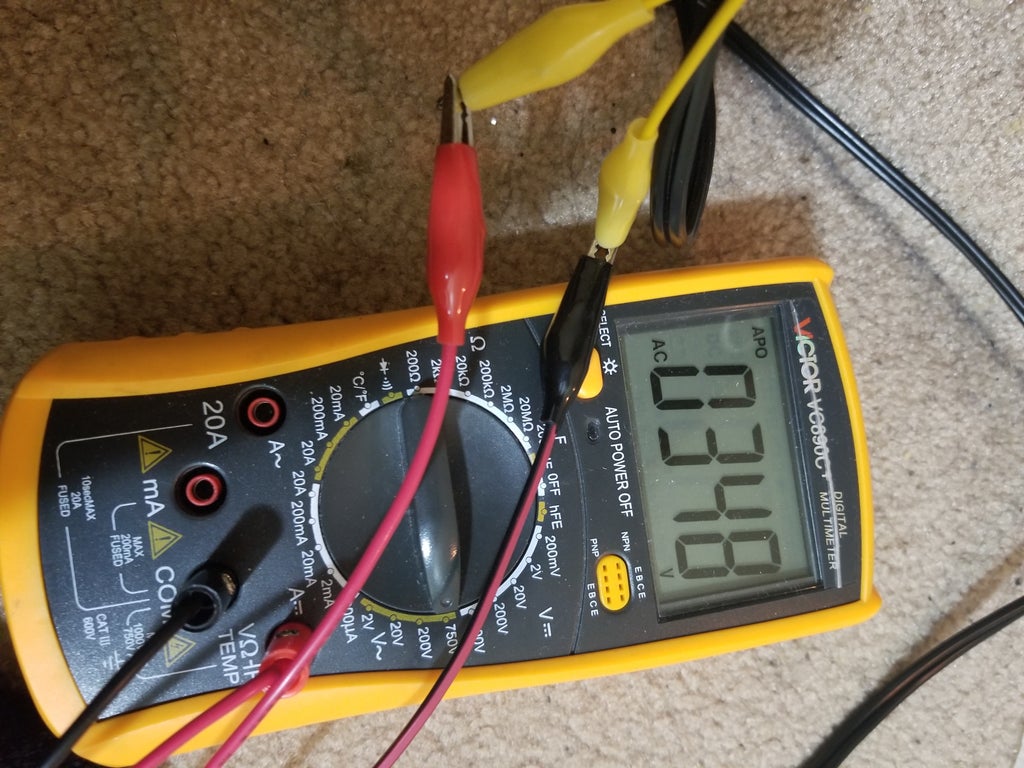
Test the voltage from the ends of the alligator clips connected to the ends of the second transformer with the multimeter at a setting above 450V AC (squiggly line next to the V, not the straight line). The voltage when plugged into the wall will be lower than expected due to the resistance of the wires and everything connected.
Step 12: Charging the Capacitors (4)
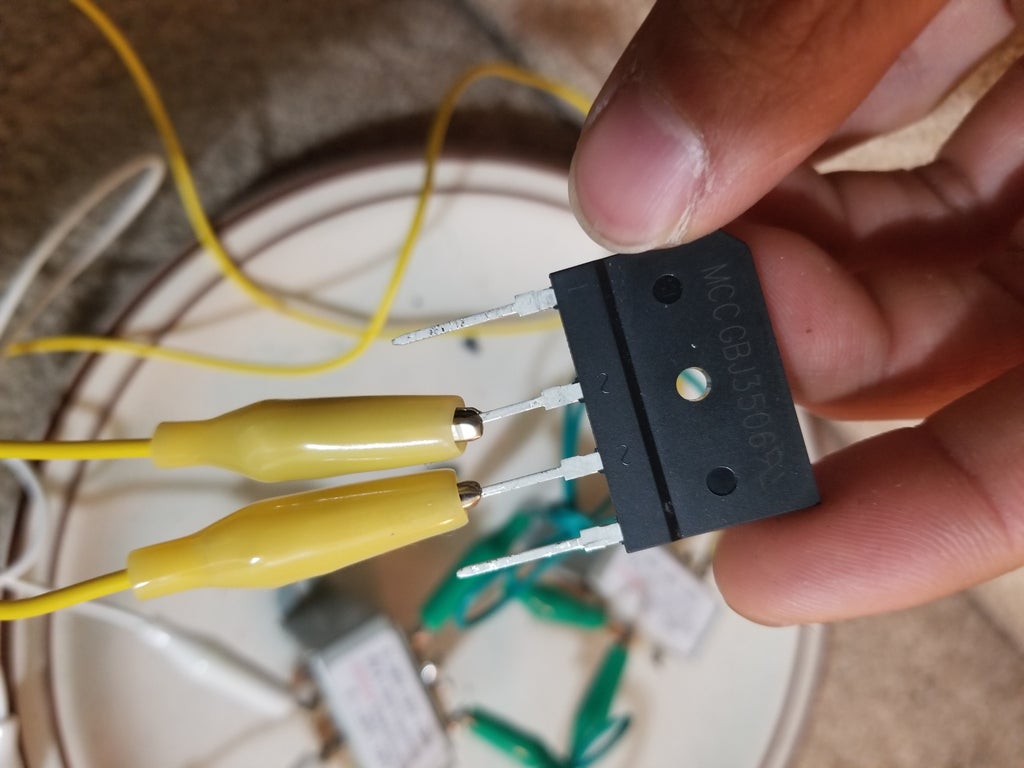
Since the power coming from the wall is AC and the capacitors need to be charged with DC power (it has a positive and negative polarity at its ends), we use the bridge rectifier to change the AC power to DC. Connect the ends of the alligator clips from the second transformer to the 2 middle pins of the bridge rectifier making sure the alligator clips do not touch any of the other pins.
Step 13: Charging the Capacitors (5)
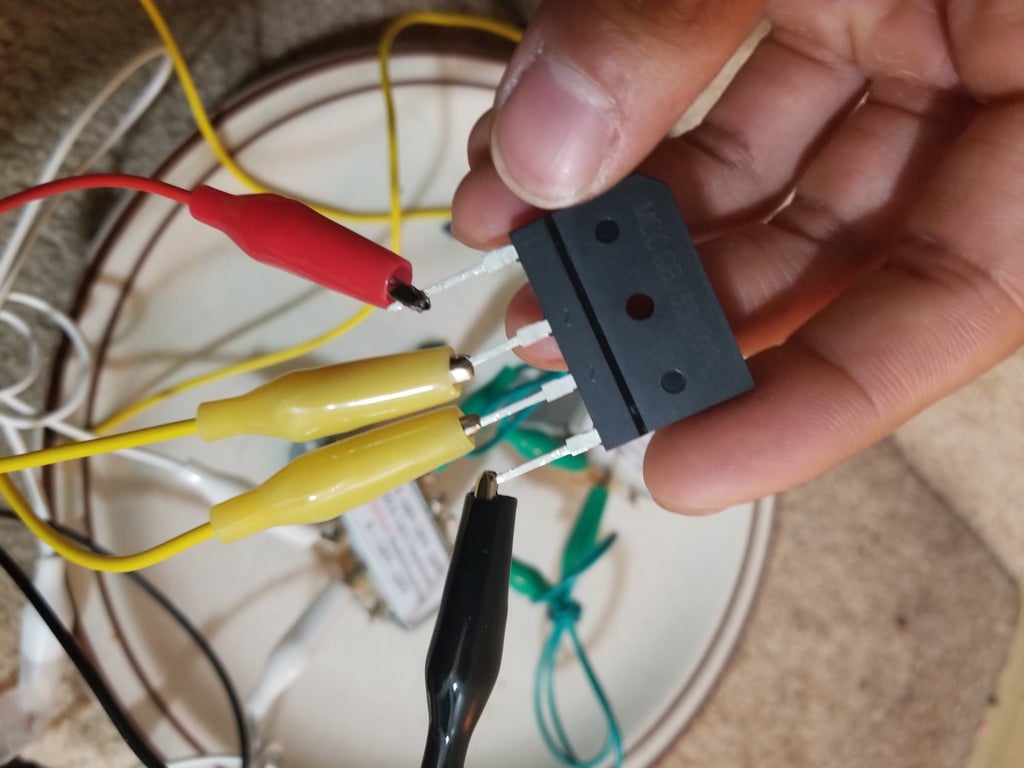
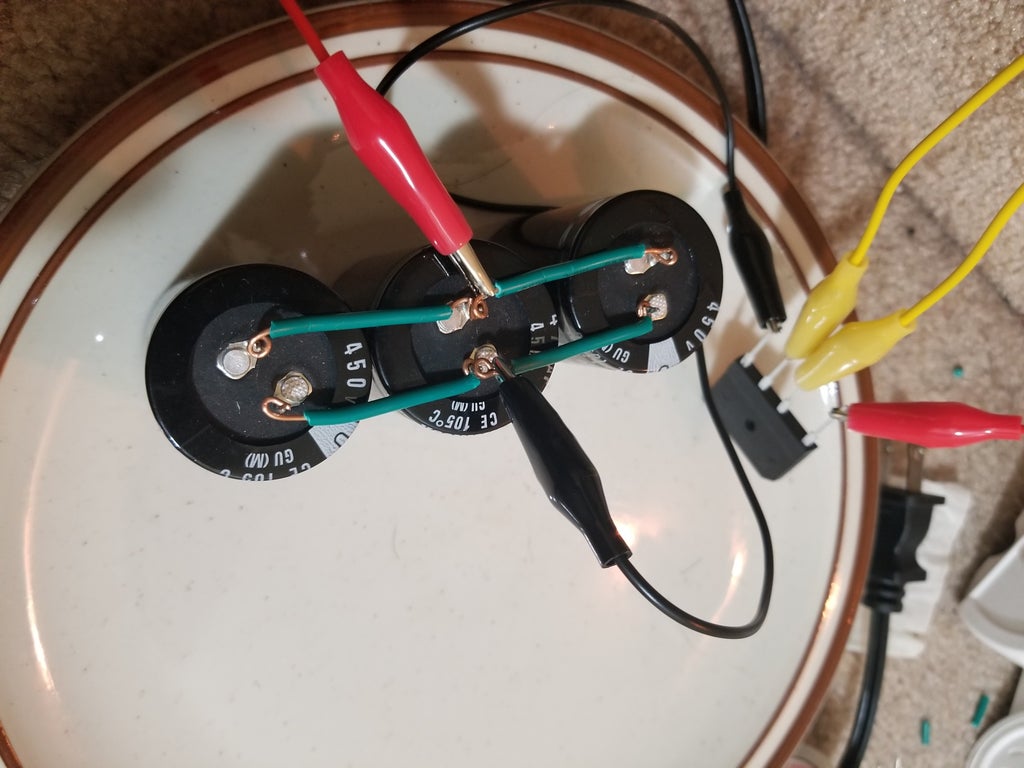
The symbol above the outer pins of the bridge rectifier will be either + or -. Connect these to the + and – ends of the capacitors using 2 more alligator clips.
Step 14: Charging the Capacitors (6)
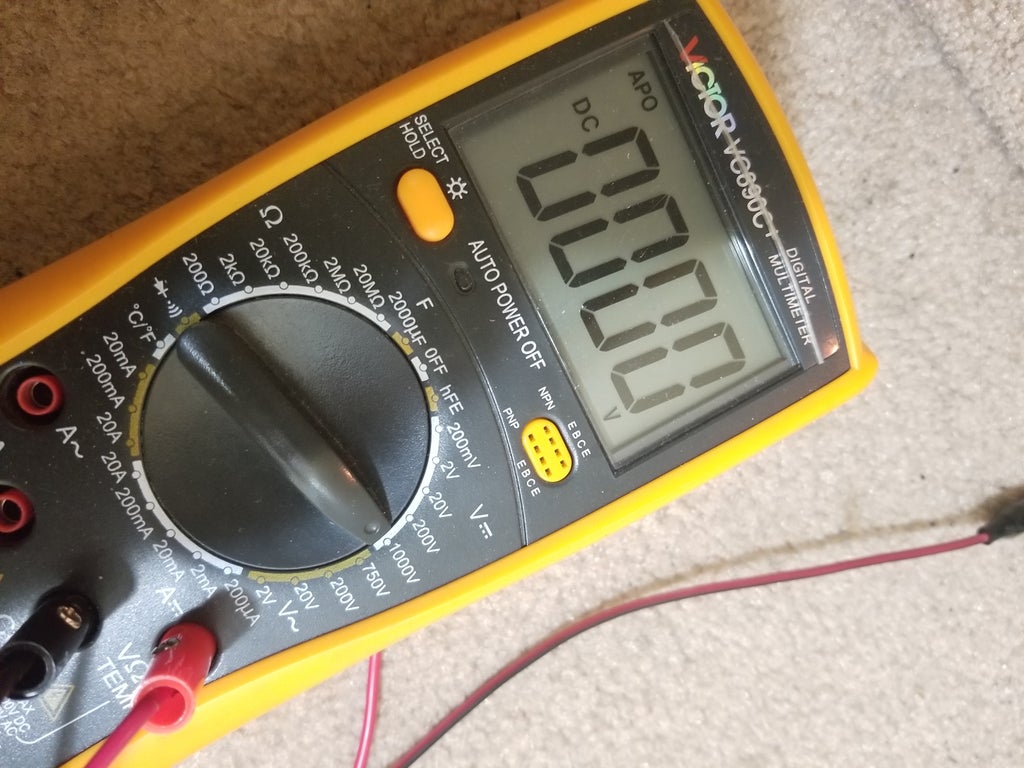
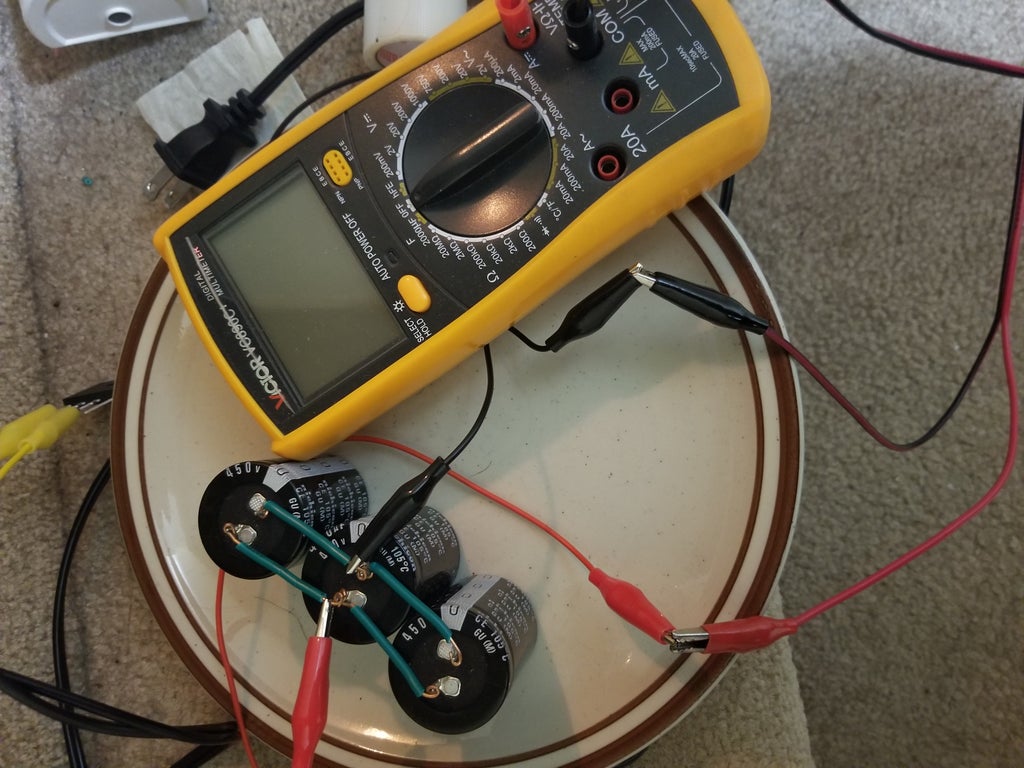
Plug the power cord into the wall and wait 30 seconds or so for the capacitors to fully charge. Unplug the power cord.
IMPORTANT: do not touch the two ends of the capacitors at the same time otherwise it may hurt. Test whether the capacitors are fully charged using the multimeter at a setting above 450V DC (straight line next the V, not the squiggly line).
Step 15: Charging the Capacitors (7)
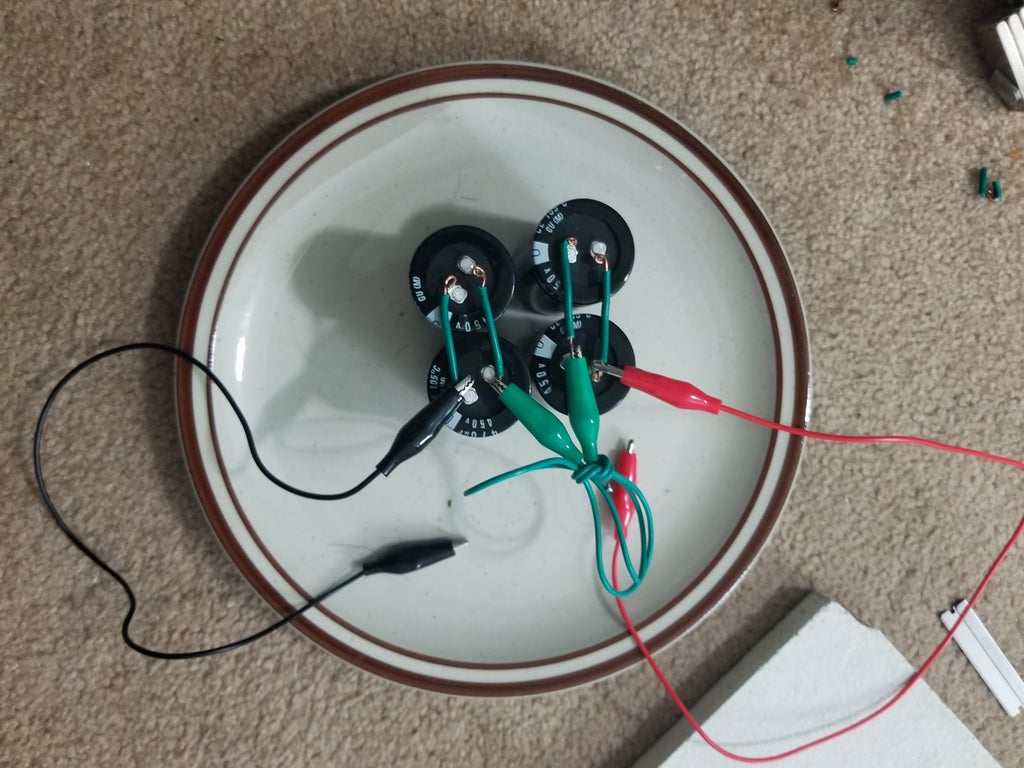
NOTE: You can connect the capacitors in series (negative post to positive post) to increase the voltage of the power source created. Use the same number of capacitors for each of the parallel connected sets of capacitors (example: if 3 capacitors are chosen to be connected in parallel in the picture below, connect the series with sets of 3 parallel-connected capacitors with a total of 6 capacitors).
In this example, 2 sets of parallel-connected capacitors are connected in series for a power source of 900 volts. Each set of parallel-connected capacitors will have a total capacitance of 940uF.
Step 16: Setting Up the Railgun
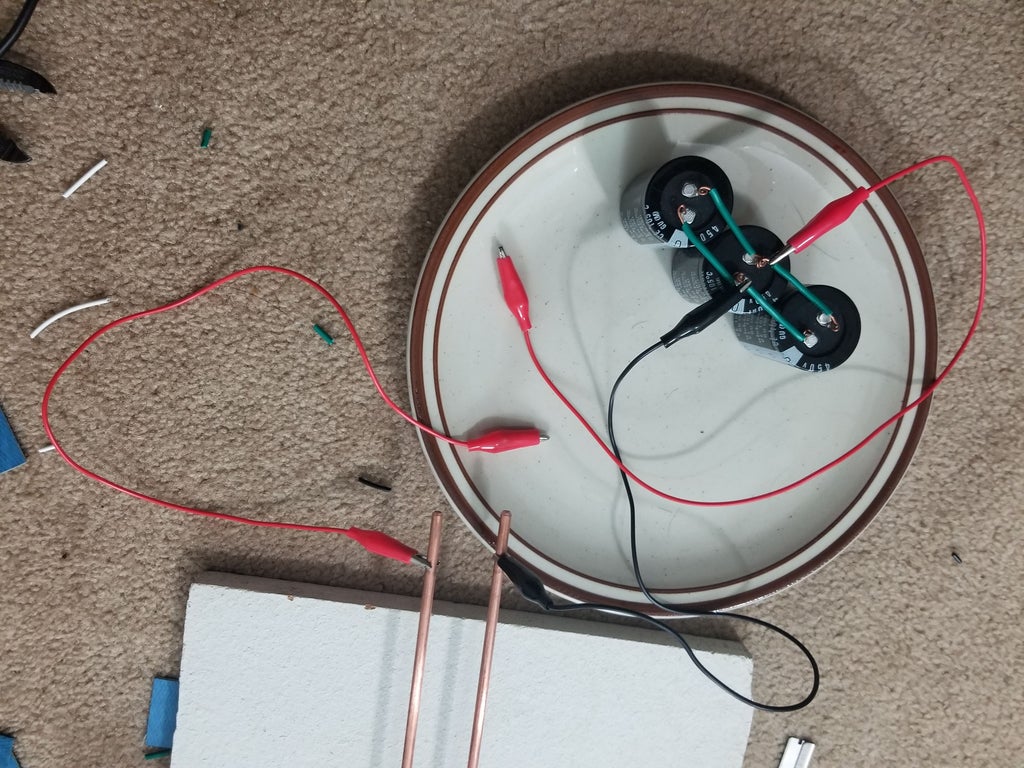
Set up the projectile above one end of the rod above a portion of the magnet. Connect the negative end of the capacitor to one of the rail ends with an alligator clip like the battery previously used. Using another alligator clip, connect one end of the clip to the other rail leaving the other end of the clip free.
Step 17: Firing the Railgun
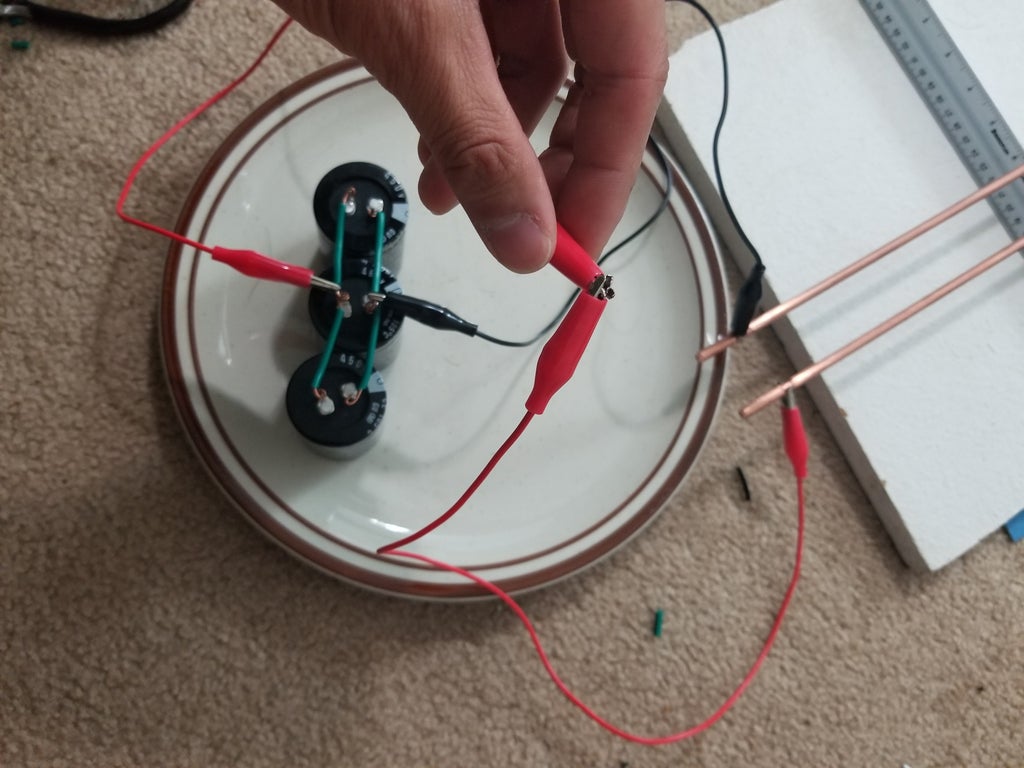
Connect the positive end of the capacitor to the free end of the alligator clip that is connected to the other rod and the projectile will shoot.
Related posts
-
 Touch Switch Circuit With Mosfet
10/19/20173920 viewsThe simple touch switch LED circuit utilizes biasing characteristics of the MOSFET.Read more
Touch Switch Circuit With Mosfet
10/19/20173920 viewsThe simple touch switch LED circuit utilizes biasing characteristics of the MOSFET.Read more -
 Egg Timer
11/16/20182495 viewsThis project demonstrates the basics of digital logic, the characteristics of a NE555 timer, and demonstrates how...Read more
Egg Timer
11/16/20182495 viewsThis project demonstrates the basics of digital logic, the characteristics of a NE555 timer, and demonstrates how...Read more -
 Arduino Piano Project
10/23/20172544 viewsThis is a piano board with eight push button switches that allows you to play one octave (Do Re Mi Fa So La Si Do)...Read more
Arduino Piano Project
10/23/20172544 viewsThis is a piano board with eight push button switches that allows you to play one octave (Do Re Mi Fa So La Si Do)...Read more -
 Small AC to DC Converter
03/16/20182967 viewsThe small AC to DC Voltage Converter project uses four diodes to make one bridge rectifier to transfer AC power to DC...Read more
Small AC to DC Converter
03/16/20182967 viewsThe small AC to DC Voltage Converter project uses four diodes to make one bridge rectifier to transfer AC power to DC...Read more -
 RF Remote Control Car
03/09/20173733 viewsThe RC car is a great project for all ages and it doesn’t require any programming. It uses simple integrated circuits...Read more
RF Remote Control Car
03/09/20173733 viewsThe RC car is a great project for all ages and it doesn’t require any programming. It uses simple integrated circuits...Read more































































































.png)
